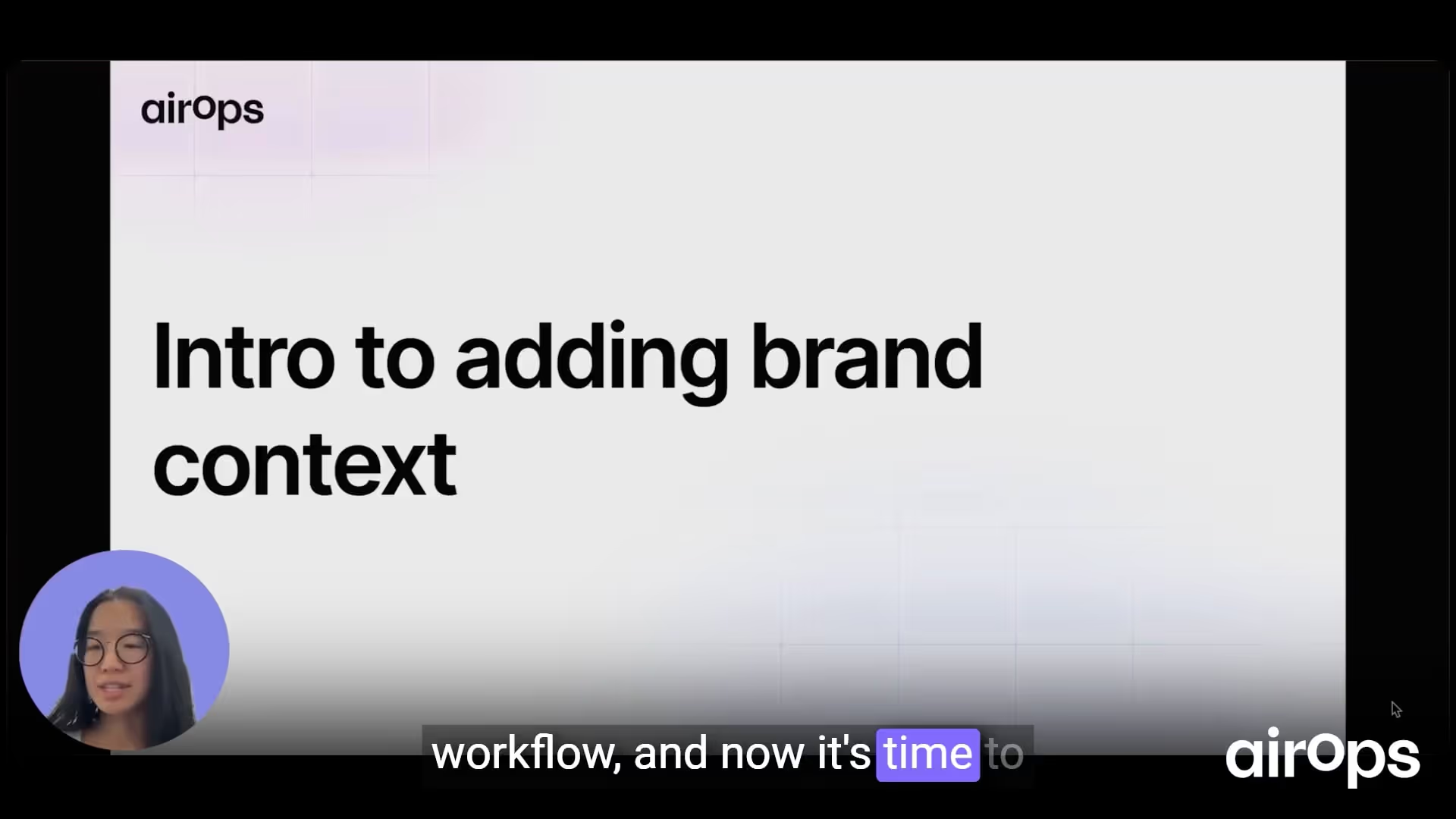Intro to brand context
After creating your first Workflow, it’s time to add brand context. Without brand context, AI-generated output will be:
- Generic rather than opinionated
- Full of broad AI language instead of precise brand voice
- Factually correct yet unable to surface the 20% of details that matter versus the 80% that don’t
Why brand context matters
- Ensures content reflects your unique positioning and priorities
- Helps the model highlight key differentiators instead of listing every feature equally
- Transforms an accurate yet bland summary into something resonant and on-brand
Example: ChatGPT’s generic summary
When you ask ChatGPT to “tell me about ramp.com,” the model returns a factual list of features:
- Corporate cards
- Expense management
- Treasury services
At first glance, this feels like a solid overview—but it misses:
- Which feature is the core differentiator
- How those features interrelate
- The bold, opinionated stance that makes Ramp unique
Observing Ramp’s own brand language
Visiting Ramp’s homepage reveals a clear, on-brand message: “Time is money, save both.” This illustrates how a brand:
- Packages generic concepts (like time savings) into a signature value prop
- Uses bold phrasing rather than neutral terms such as “workflows and systems”
- Targets specific customer personas with tailored solutions that AI alone won’t invent
In the next videos, you’ll see exactly how to weave this type of brand context into your Workflows, ensuring every output carries the precise voice and focus of your brand.

